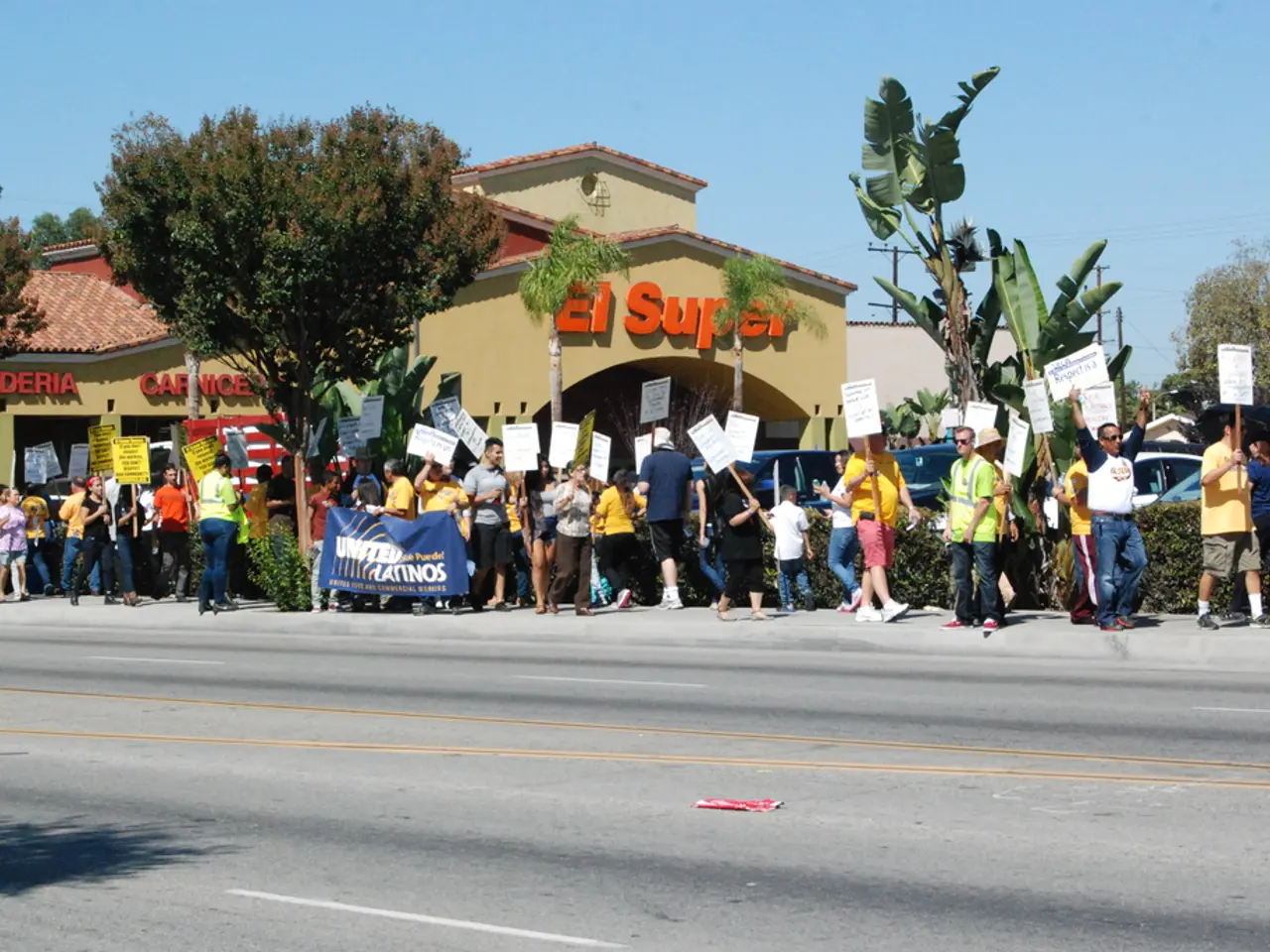Hamas provides a 'favorable reaction' to truce proposition, marking a significant advancement towards an agreement.
In a significant turn of events, Hamas has accepted a 60-day ceasefire proposal with Israel in Gaza, marking a potential breakthrough in the long-standing conflict. The proposal, sponsored by the United States and Qatar, includes a series of key conditions and arrangements.
The ceasefire is set for 60 days, with U.S. President Donald Trump guaranteeing Israel's obligation to honor the ceasefire during this period. There is a proposal that the ceasefire could be extended beyond 60 days if needed to negotiate a permanent peace.
One of the most significant aspects of the proposal is the hostage release. Hamas is to release a total of 10 living hostages and return the bodies of 18 deceased hostages. The release is staggered throughout the ceasefire: on Day 1, 8 living hostages will be released; on Day 7, 5 deceased hostages will be delivered; on Day 30, 5 living hostages will be released; on Day 50, 2 living hostages will be released; and on Day 60, 8 deceased hostages will be delivered. Hamas has agreed not to hold public ceremonies for the releases, differing from a previous ceasefire arrangement.
Hamas has also raised three reservations about the proposal. A major sticking point is Hamas’s demand that talks on a permanent ceasefire continue until a full agreement is reached, without requiring Israel’s consent to extend past 60 days. Hamas also demands that the United Nations resume running humanitarian aid delivery in Gaza, excluding the Israel and U.S.-backed Gaza Humanitarian Fund. Israel has rejected these demands.
The proposal also outlines the terms for military actions. All offensive Israeli Defense Forces (IDF) military activity in Gaza would stop when the agreement takes effect. Aerial movement over Gaza would cease for 10-12 hours on days involving hostage and prisoner exchanges.
Aid would enter Gaza immediately after Hamas accepts the ceasefire, including supplies as per a previous January 2025 agreement, distributed through agreed channels such as the United Nations and the Red Crescent.
The redeployment of Israeli forces in Gaza would occur in phases after the hostages begin to be released, with technical teams conducting negotiations to expedite the redeployment. Throughout the 60-day ceasefire, Israel and Hamas would hold indirect negotiations on the terms for a permanent end to the conflict.
The White House is planning meetings to try to finalize the deal, with Israeli Prime Minister Netanyahu scheduled to travel to Washington this weekend and meet Trump at the White House on Monday. Bishara Bahbah, a Palestinian-American interlocutor, praised Hamas' response, stating they are now closer to ending the conflict.
However, both Israel and Hamas have reservations on key points such as the indefinite nature of permanent ceasefire talks and prisoner exchanges. The negotiations are ongoing, and the outcome remains uncertain.
The 60-day ceasefire proposal, a potential shift in the ongoing war-and-conflicts between Hamas and Israel, involves policy-and-legislation regarding hostage releases, military actions, and aid delivery in Gaza. Hamas has raised reservations about the permanent nature of ceasefire talks and prisoner exchanges, indicating ongoing politics in negotiations towards general news of a lasting truce.







